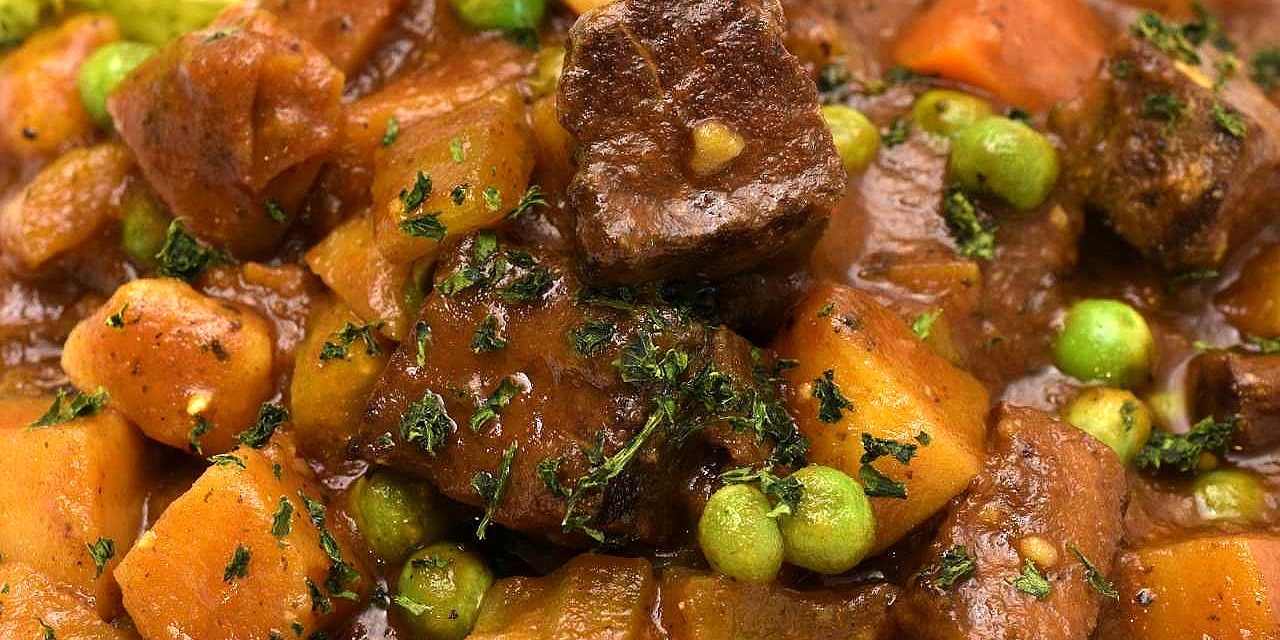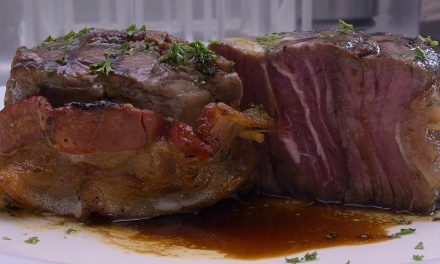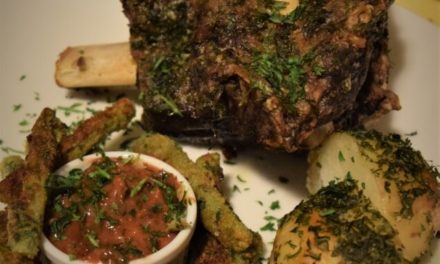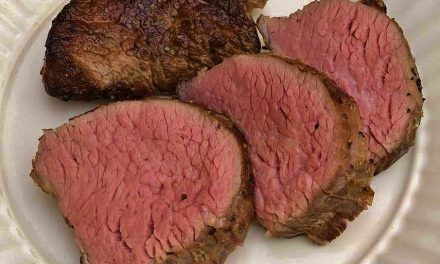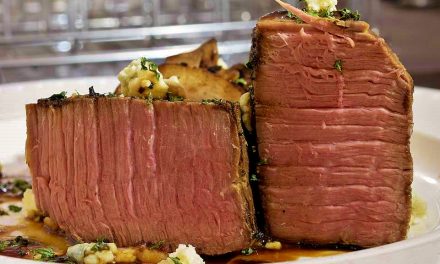The price of success
You may start your sous vide adventure with the intention of making Beef Bourguignon (which is what the French call beef stew). Or, you may find yourself in the possession of some sous vide processed beef round or chuck that you want to repurpose. The subsequent procedure is the same. It doesn’t really matter where you start–it only matters where you end up, right?
Let me stew on this for a minute
Many of us have whimsically fond memories of childhood beef stews, but I never really had a good one until an Austrian chef/instructor got me a job working for a French trained Swiss chef who showed me what my grandmother’s index cards could not.
Ingredients:
Sous vide processed beef–Beef Bourguignon originated using economical (read tough) cuts like top round, bottom round, chuck, etc. For best results, start with an intact piece of meat. If the raw meat is already cubed, the process remains the same although it may achieve tenderness slightly sooner–but no sooner than 80% of the time originally prescribed for an intact cut. Almost any inexpensive roast up to 5 lbs./2.5 Kg can typically be sous vide processed/tenderized/pasteurized according to the following guideline:
130 F/55 C for 60 hours.
140 F/60 C for 48 hours, or
155F/68 C for 30 hours.
Note: as always, use the “pinch/poke” method to measure tenderness in real time, linked HERE.
Once the processing interval has elapsed, cold shock the packaged protein in iced water until it achieves 70 F/21 C. Hold at 40 F/4 C until the day of service. In this state, it can be safely held for at least two weeks without any degradation of quality or safety. Dip the package in hot water or a functioning sous vide bath for a minute or two to loosen the gel in the pouch. Harvest the juices and process according to the method explained HERE. Set the clarified juices aside for the moment.
Assemble your ingredients:
Sous vide processed beef, 12 oz/350 g, cut into bite sized pieces.
Vegetable oil or shortening, 2 oz/60 g.
Celery, 2 stalks, cut coarsely.
Carrots, 1 each, cut coarsely (do not peel).
Onions, 1 each, cut coarsely (do not peel).
Tomato paste, 1 can, 6 oz/180 g.
Red wine, 1 cup.
Garni
Celery, 2 stalks, cut into medium dice.
Carrots, peeled, 1 each, cut into medium dice.
Onions, 1 each and cut into medium dice.
Red potatoes, 1-2 each, approximately 8 oz/240 g.
Mushrooms (optional), 3 oz/90 g, quartered.
Peas, frozen, 3 oz/90 g.
Fry
Preheat a large skillet to 250 F/121 C. Add the meat and the oil to the pan.
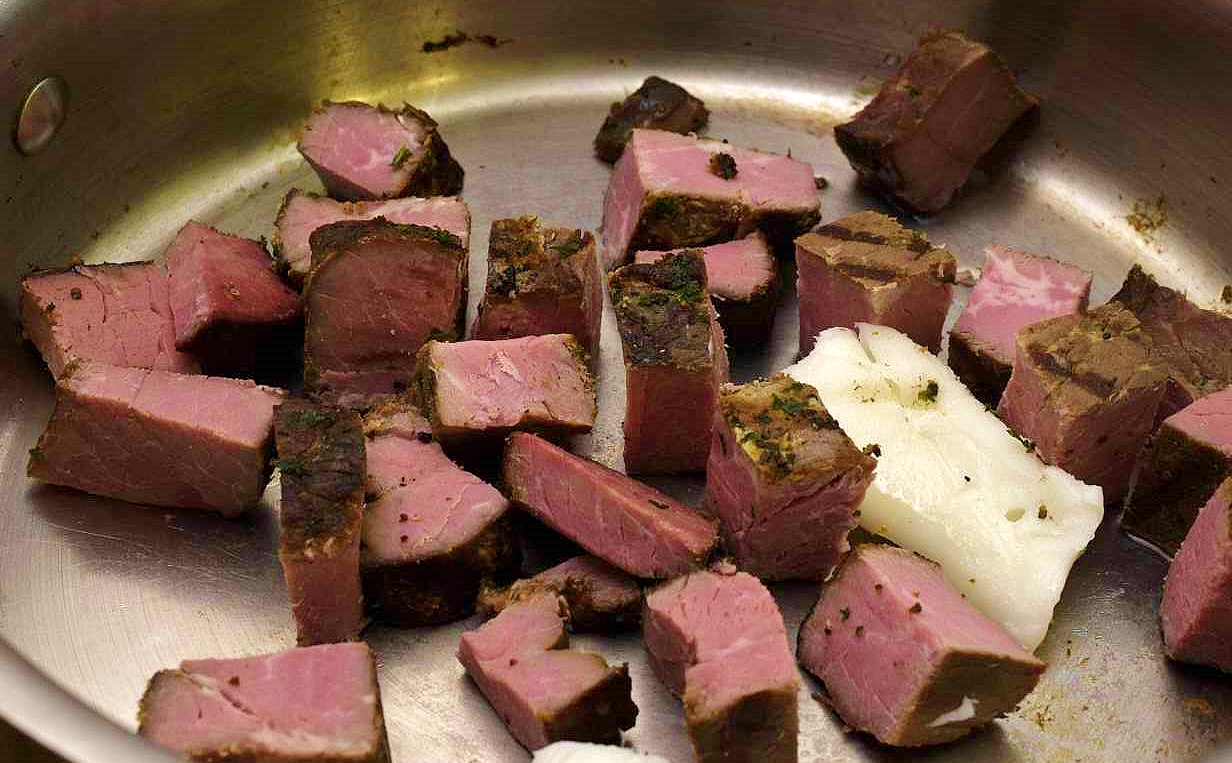
Arrange the meat so that each piece sits flat against the surface of the pan, but do not stir once you have done so.
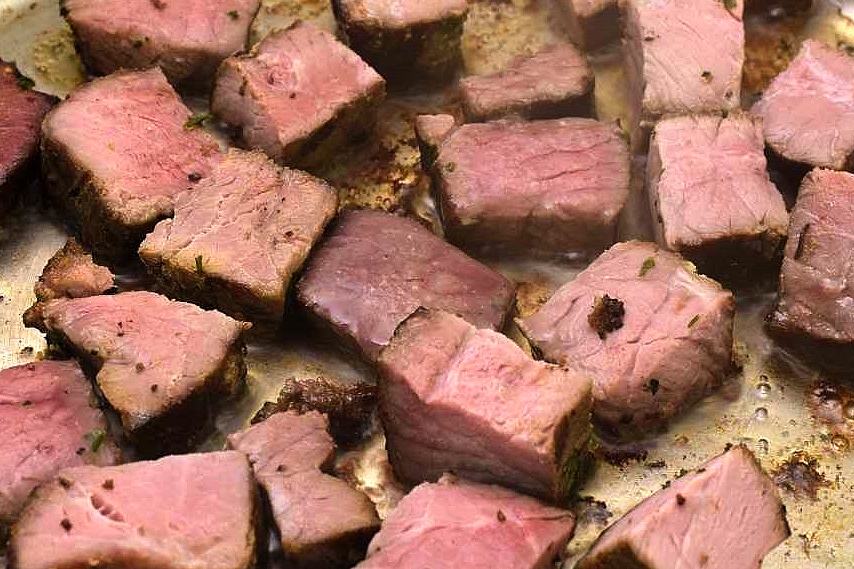
Allow the meat to fully brown on the first side. The browner the better. Impatience will give you a pink/purple stew.
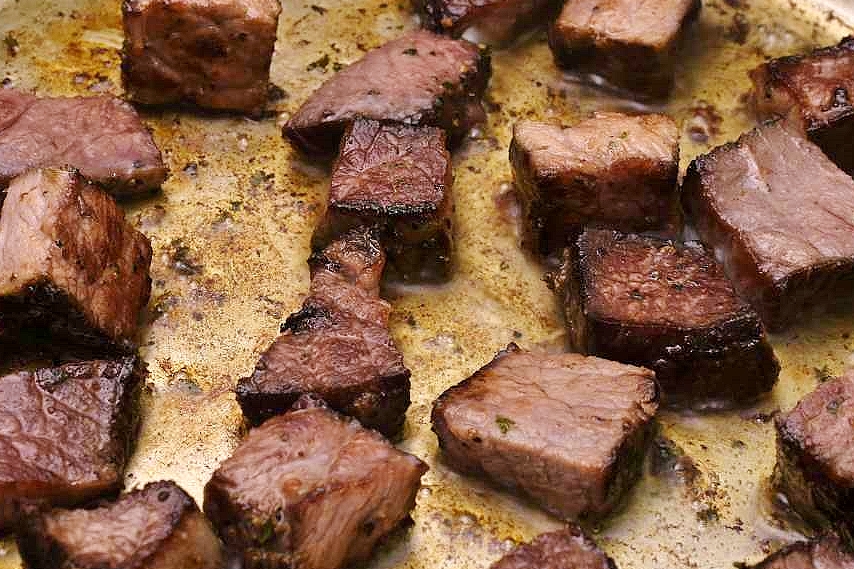
Once browned, flip each piece and repeat the process.
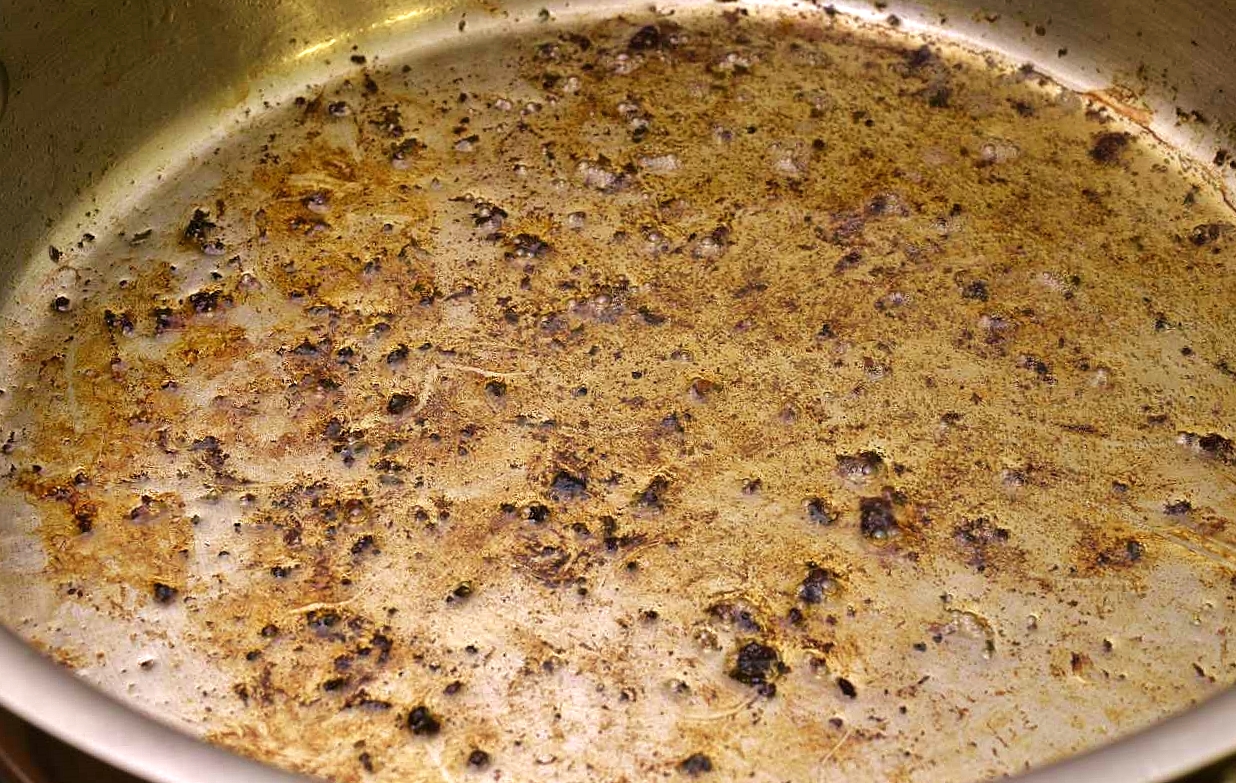
Remove the meat from the pan and set aside. Bear with me.
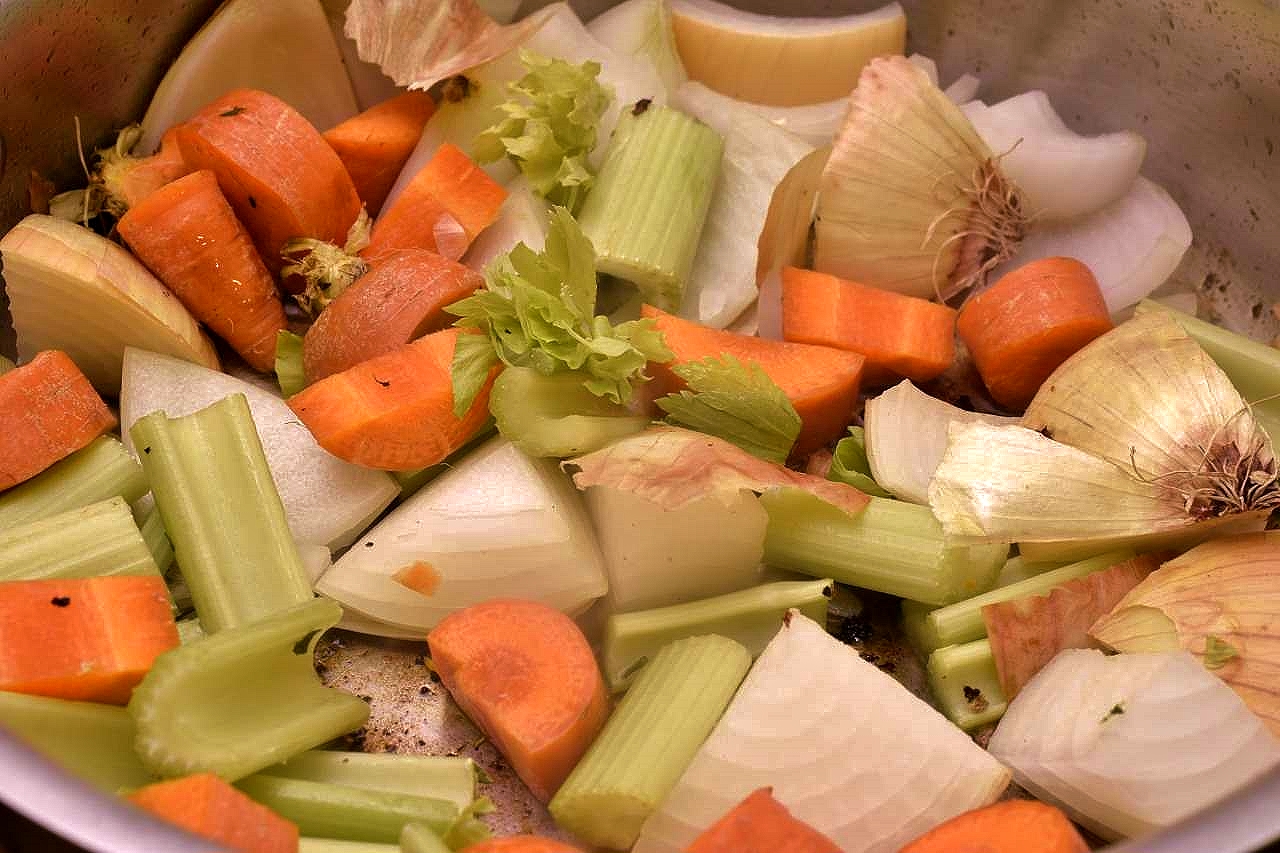
Add the coarsely cut vegetables.
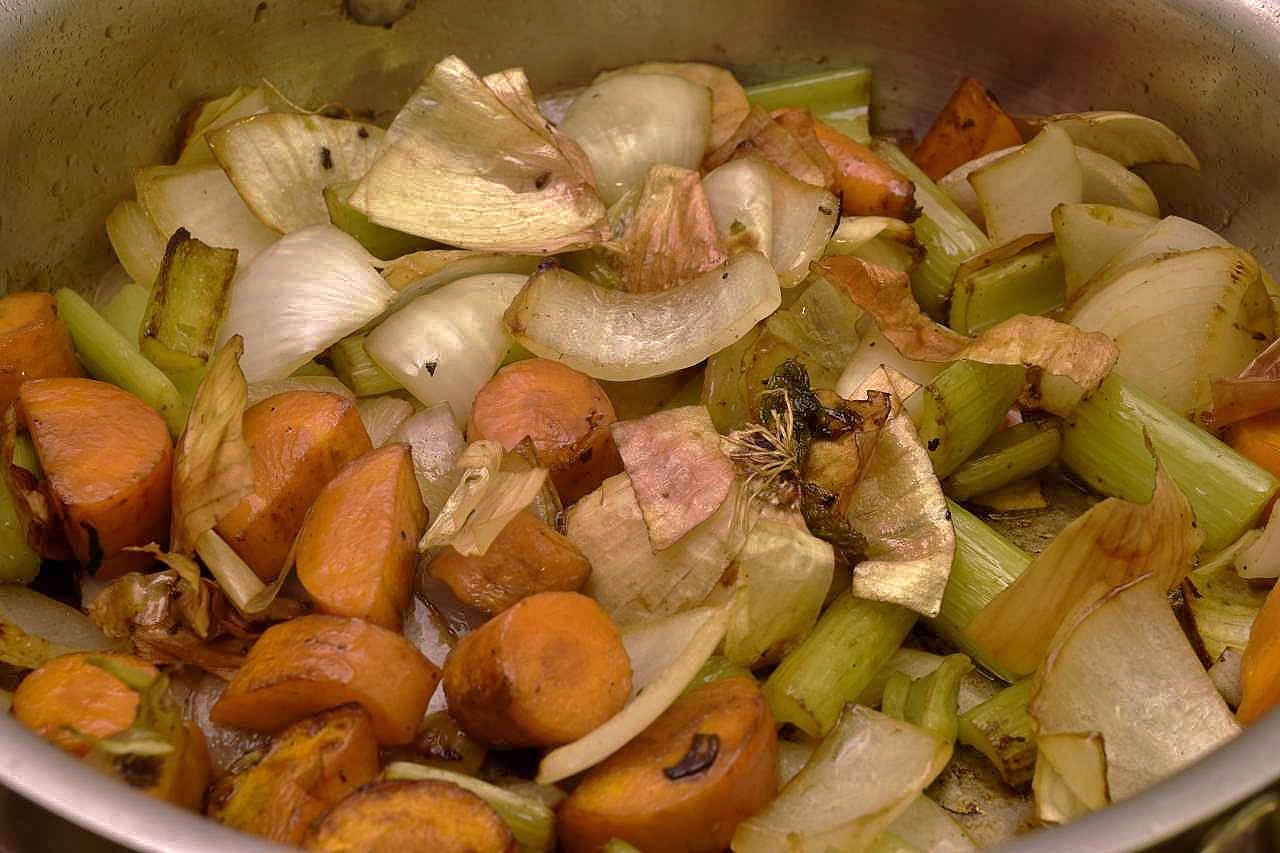
Arrange so that they sit flat on the bottom of the pan–again, we want a deep brown color. Excessive stirring is a nervous habit common to amateurs and professionals alike. Stirring cools the pan. Let the components caramelize. Reduce the heat if necessary to eliminate popping noises.
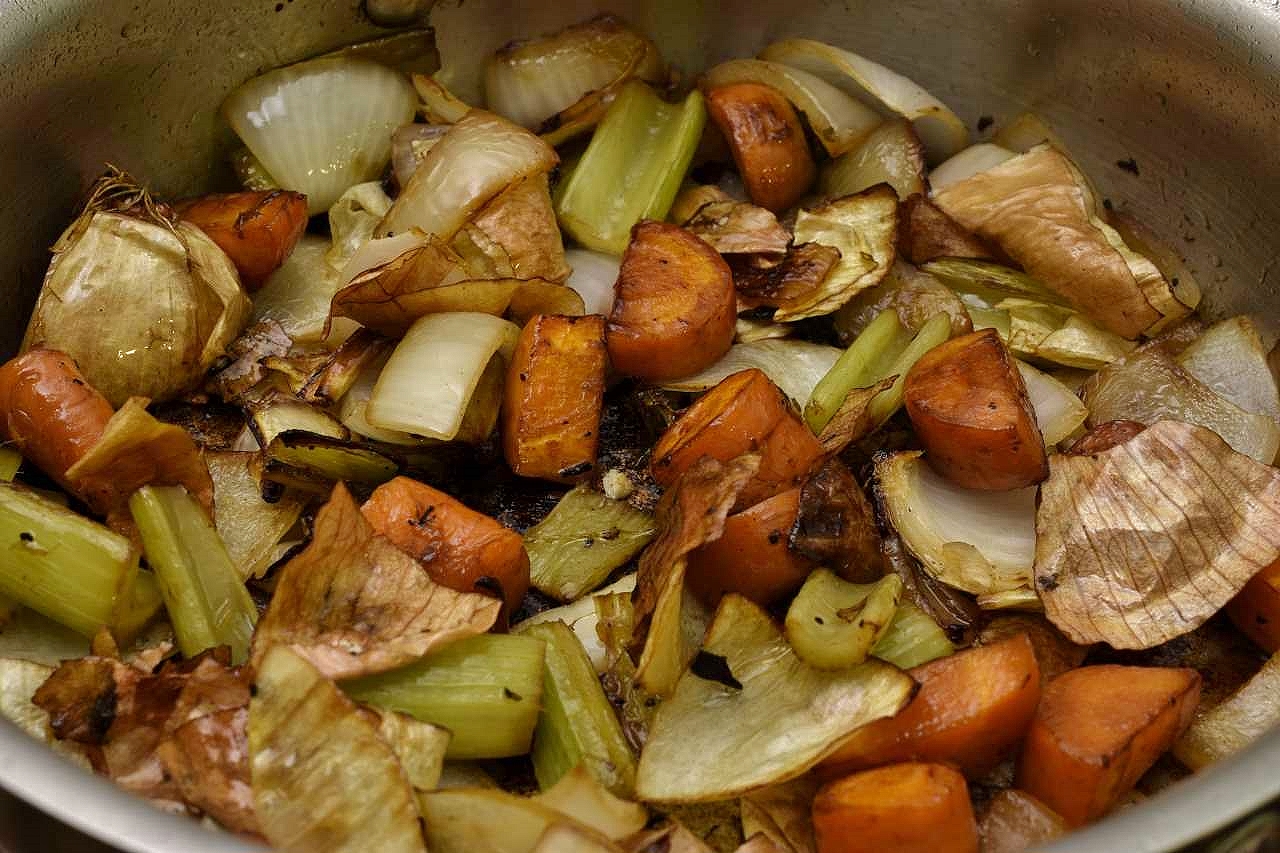
Very brown. The vegetables should actually be fully denatured and tender, similar to “pan roasted.”
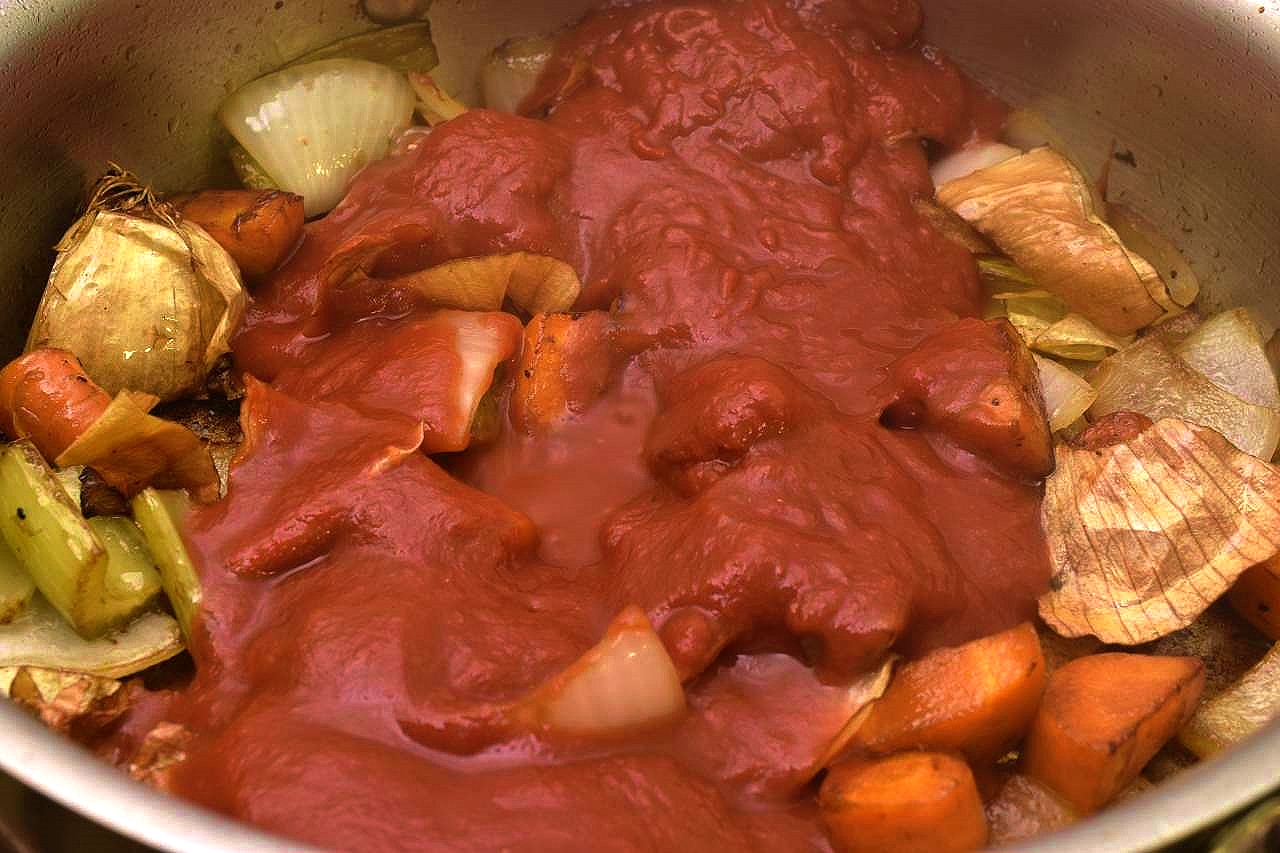
Combine the tomato paste with 6 oz/180 ml water and add to the pan.
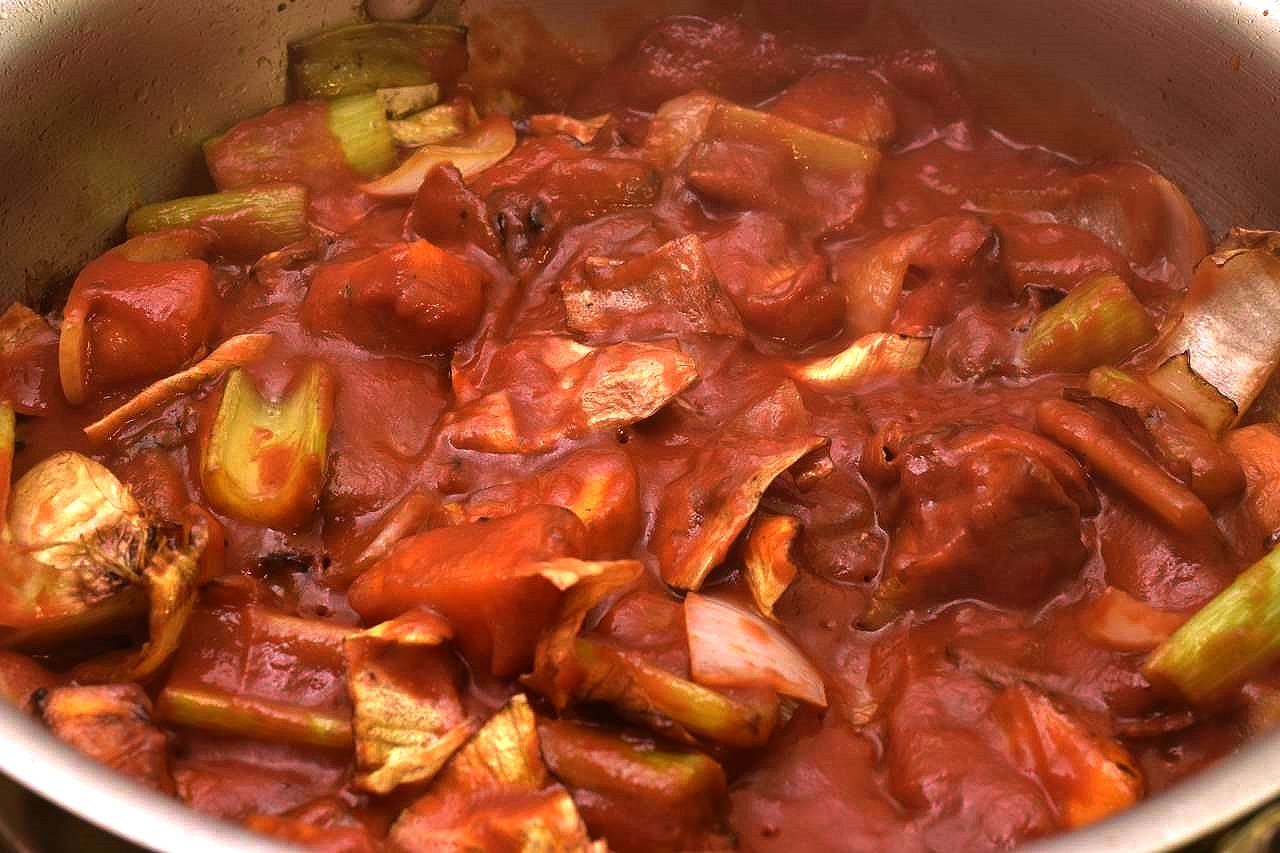
Stir to coat the vegetables. Again, let the ingredients caramelize. Reduce the heat to medium.
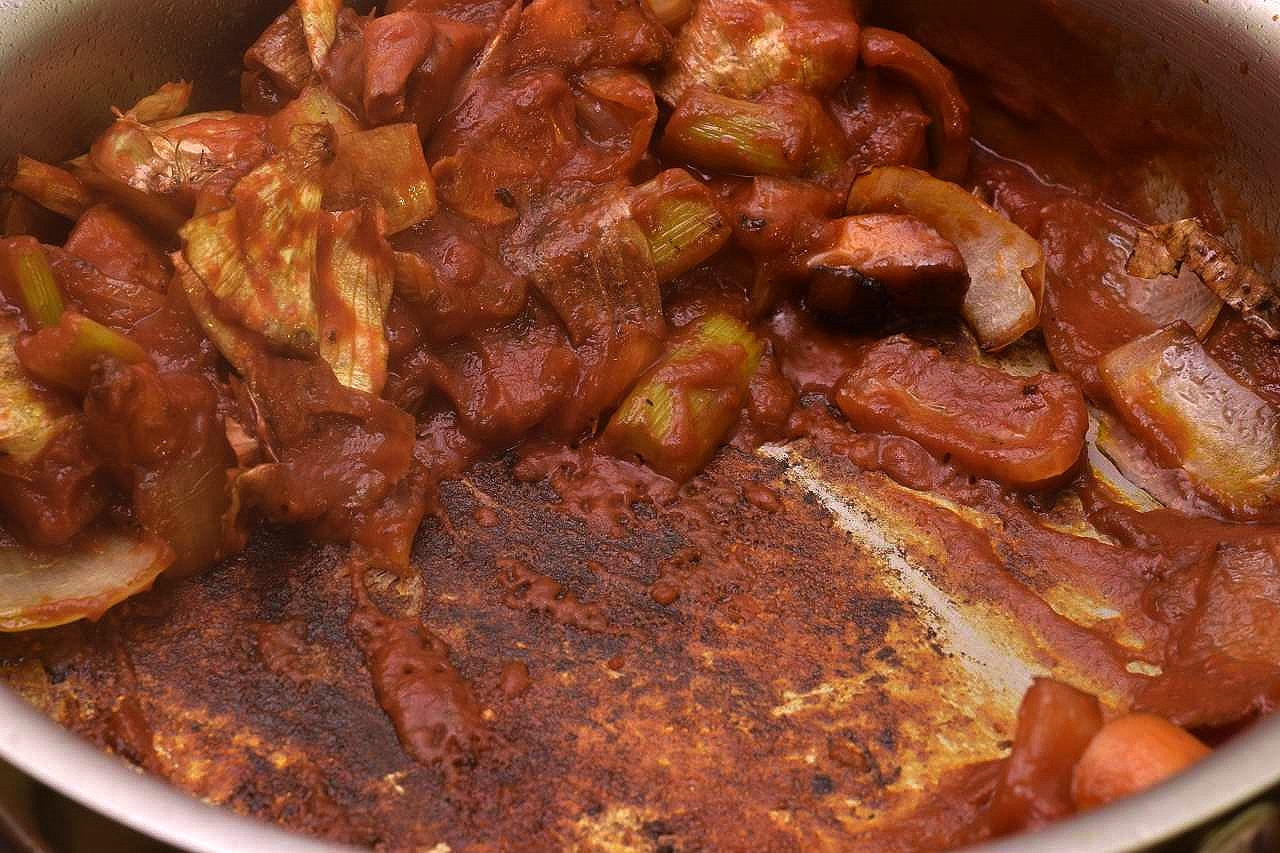
A crust may slowly develop on the bottom of the pan.
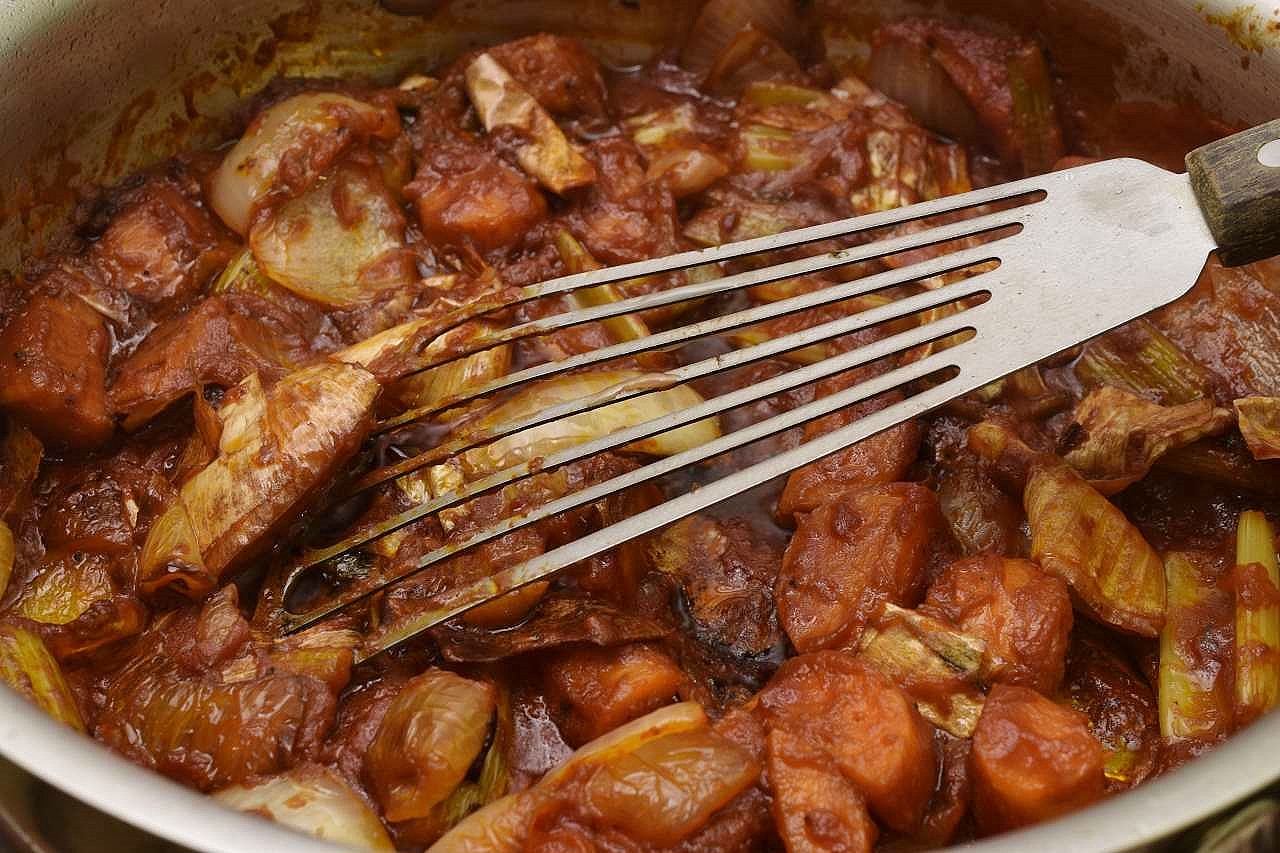
Sure, stir “occasionally.”
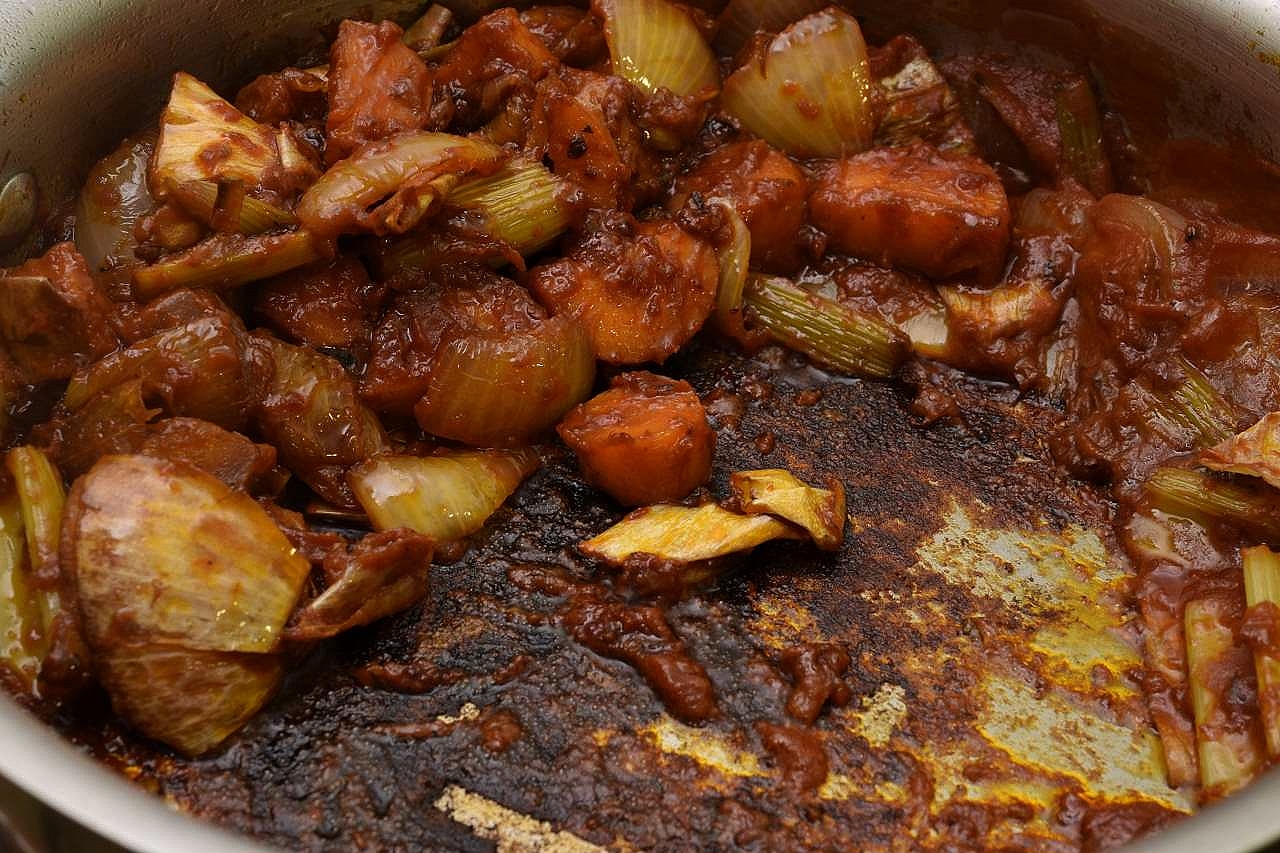
This is not too dark. If you see blue smoke, THAT’S too dark.
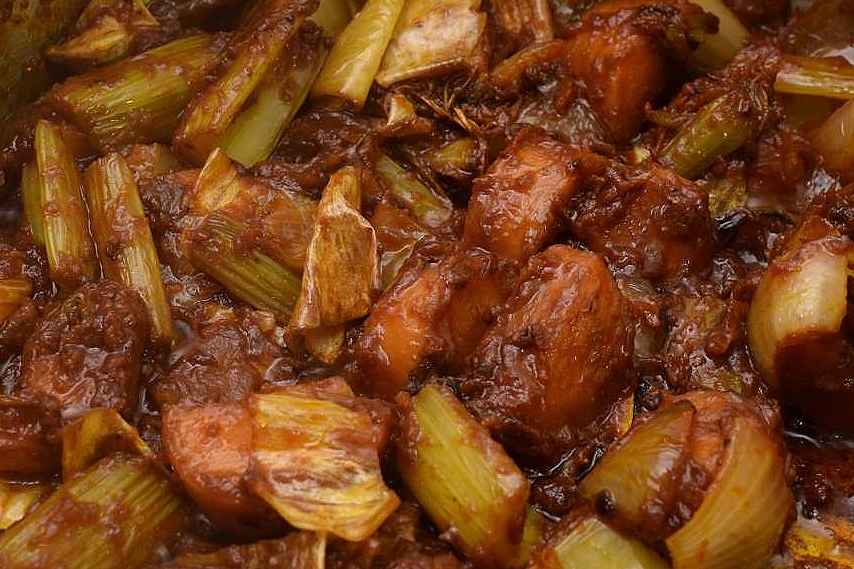
Add the wine and reduce until dry. Wine adds color and flavor, but it should NOT be used to add volume–if the wine is not sufficiently reduced, your stew may appear somewhat purple.
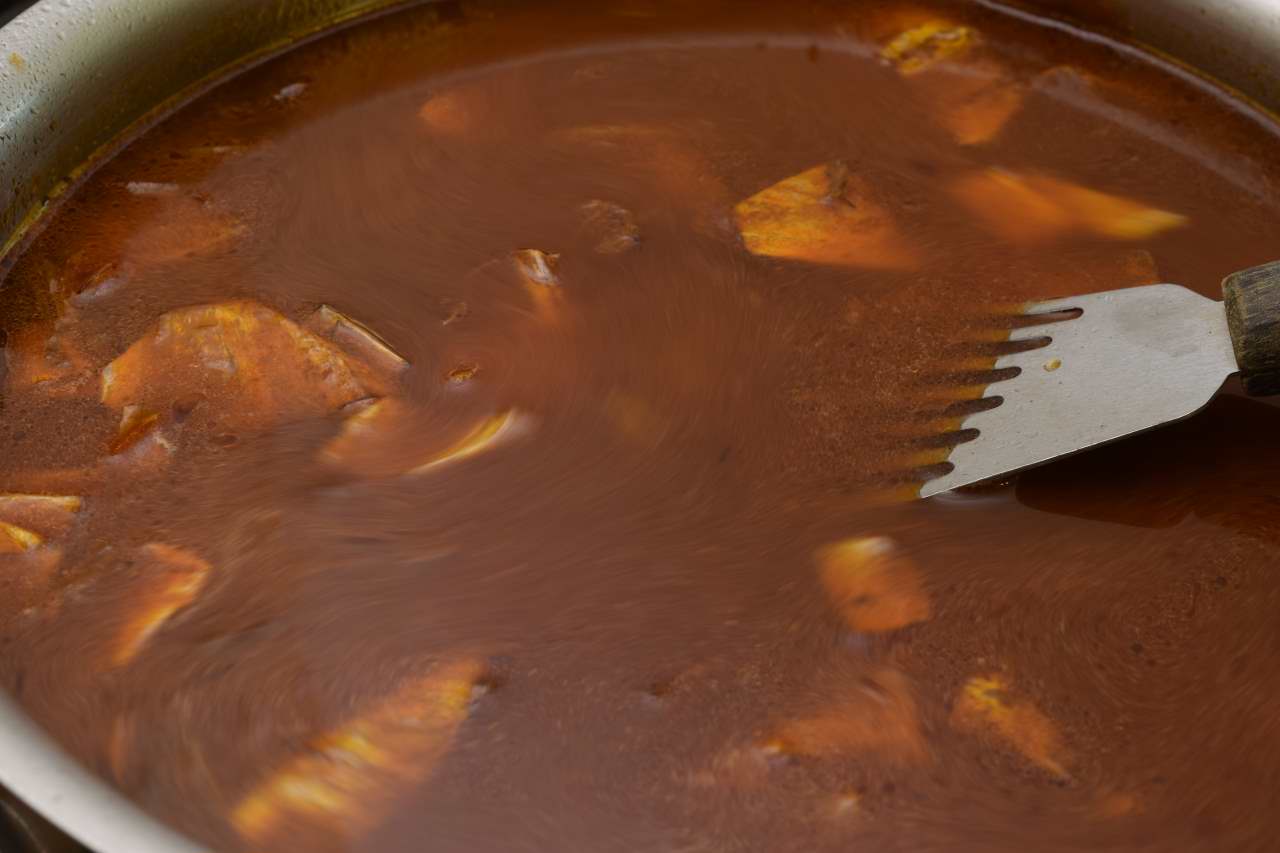
Add enough water and clarified juices to equal 2 quarts.
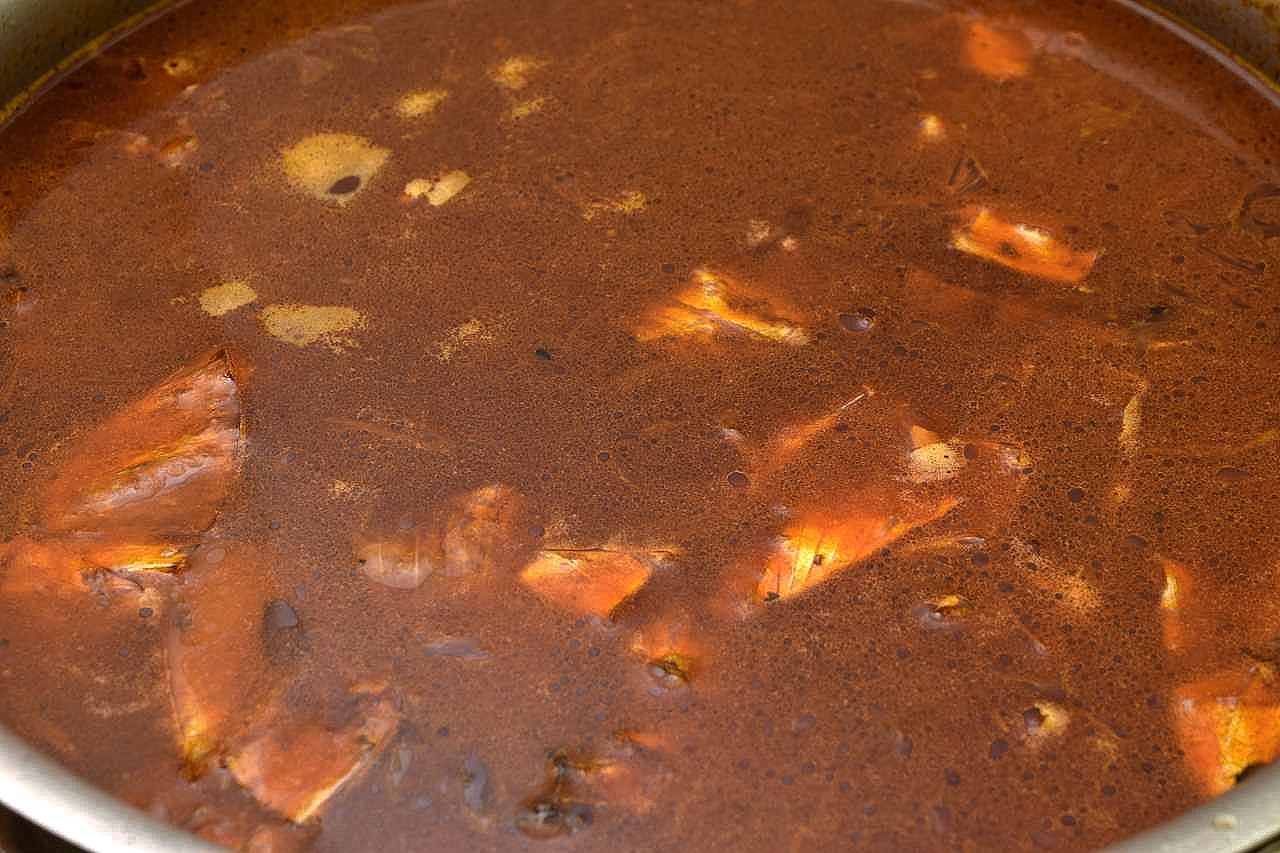
Bring to a boil and simmer for at least one hour, reducing by half. This will release all the flavor and color from the vegetables.
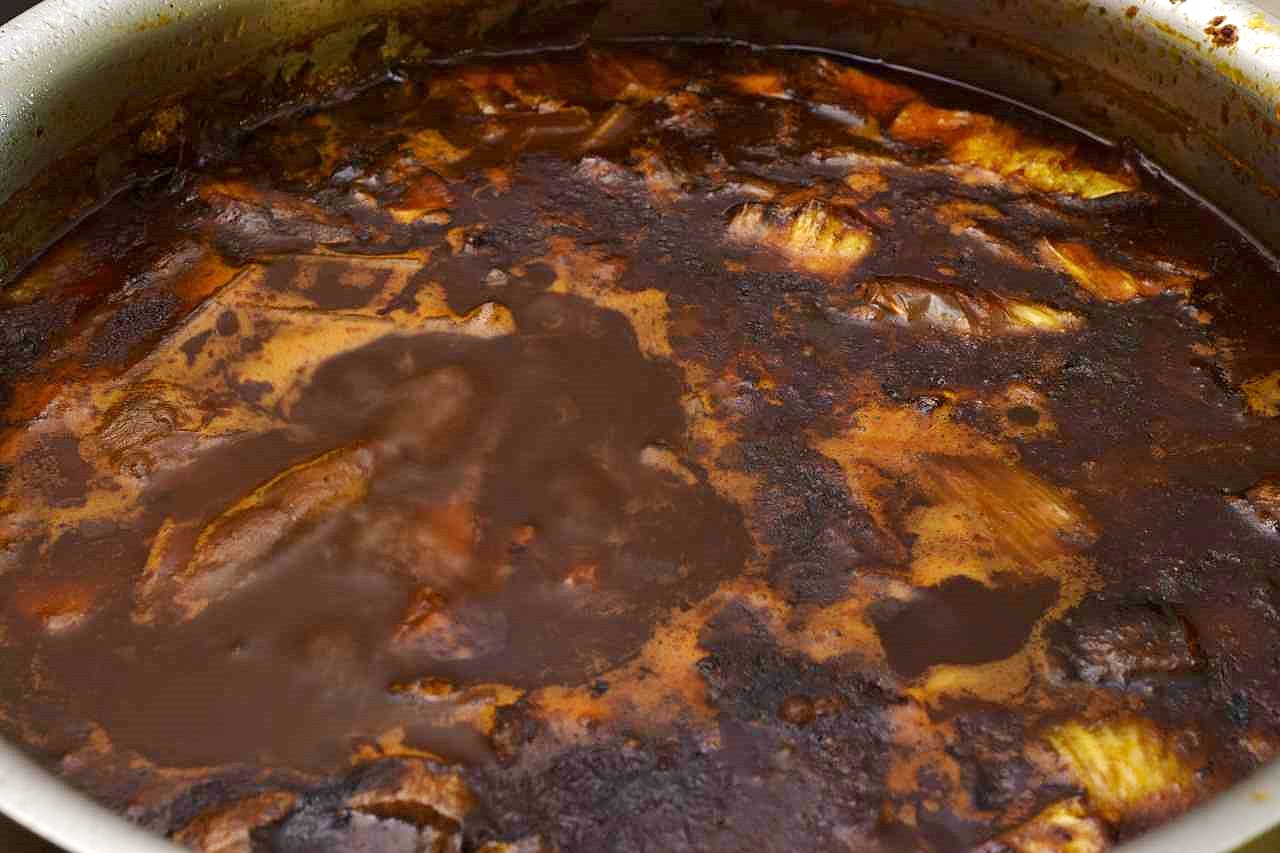
Strain the sauce and stage into tall glasses or measuring cups.
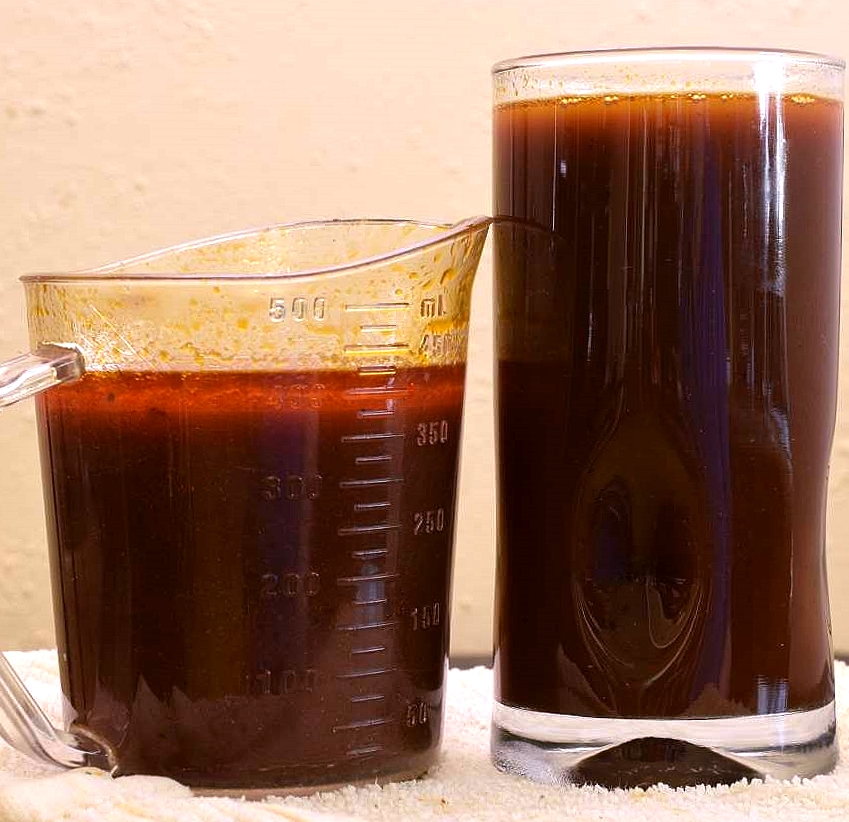
The excess fat will float to the top.
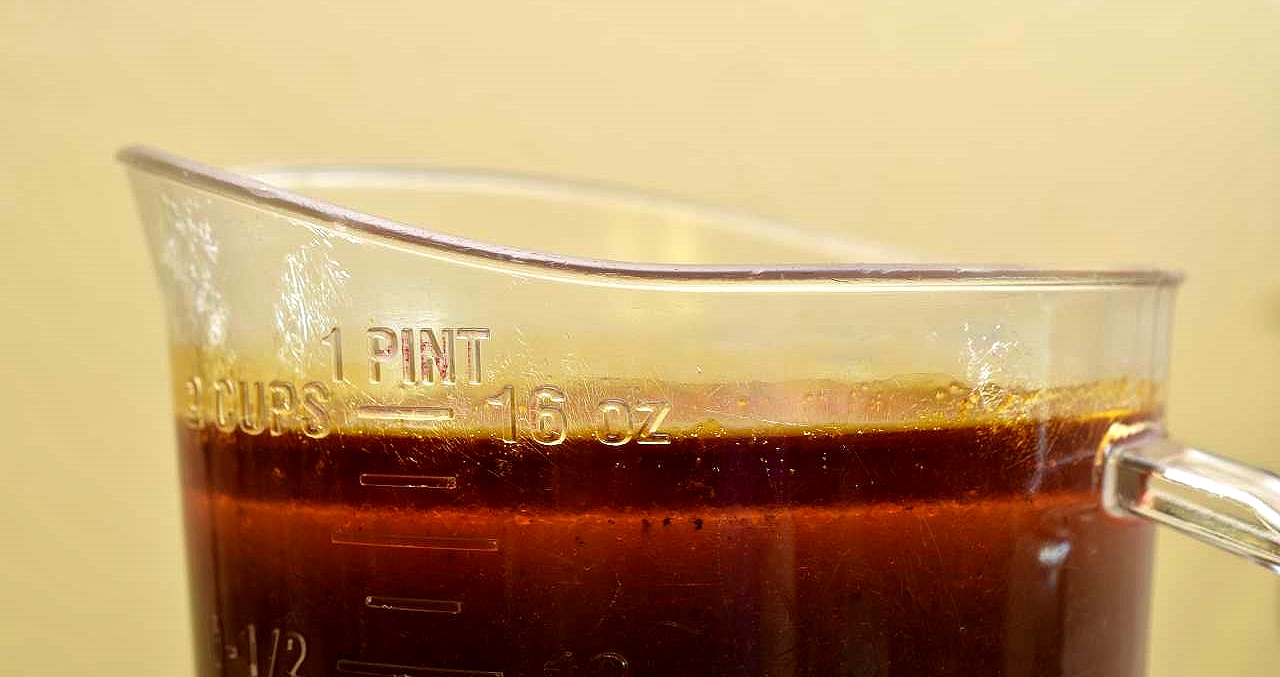
Skim with a spoon, save the skimmings and refrigerate. The fat will harden so that it can be removed and you will be able to avail yourself of that much more stock.
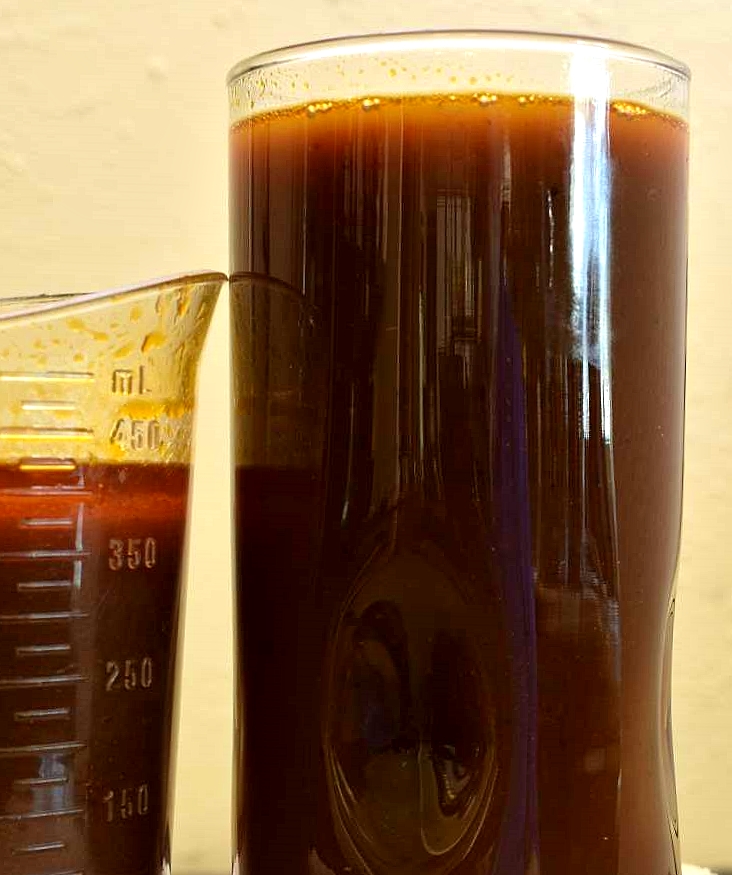
This is the color.
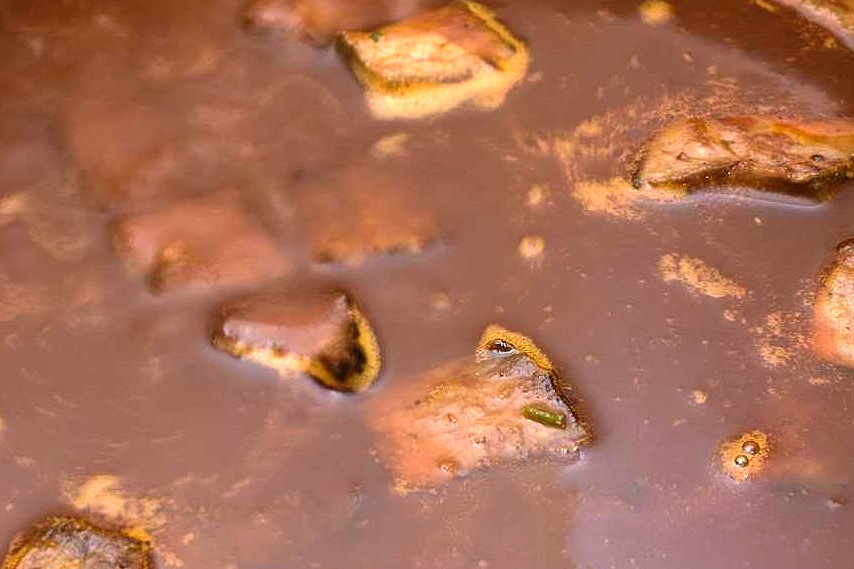
Return the stock to the pan, bring to a boil and add the meat.
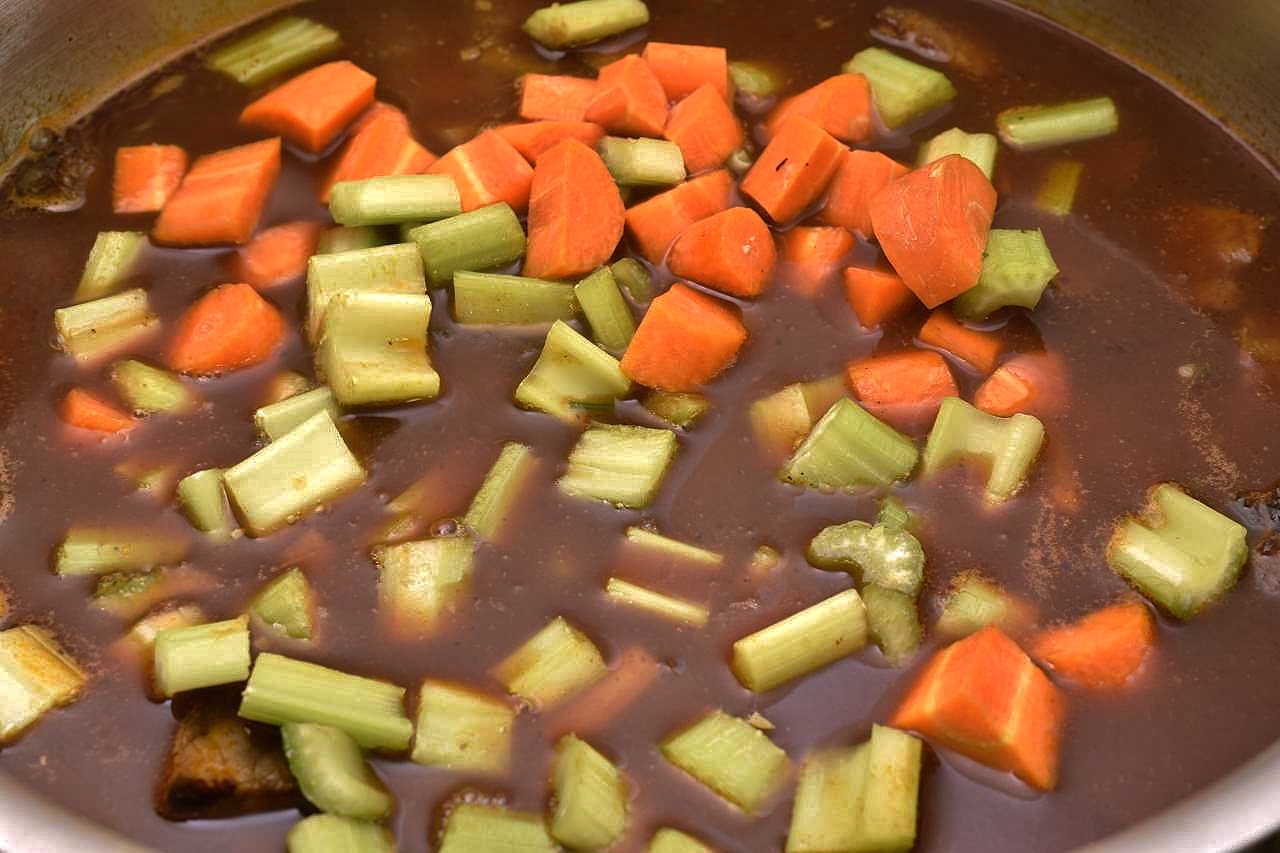
Add the celery and the onions.
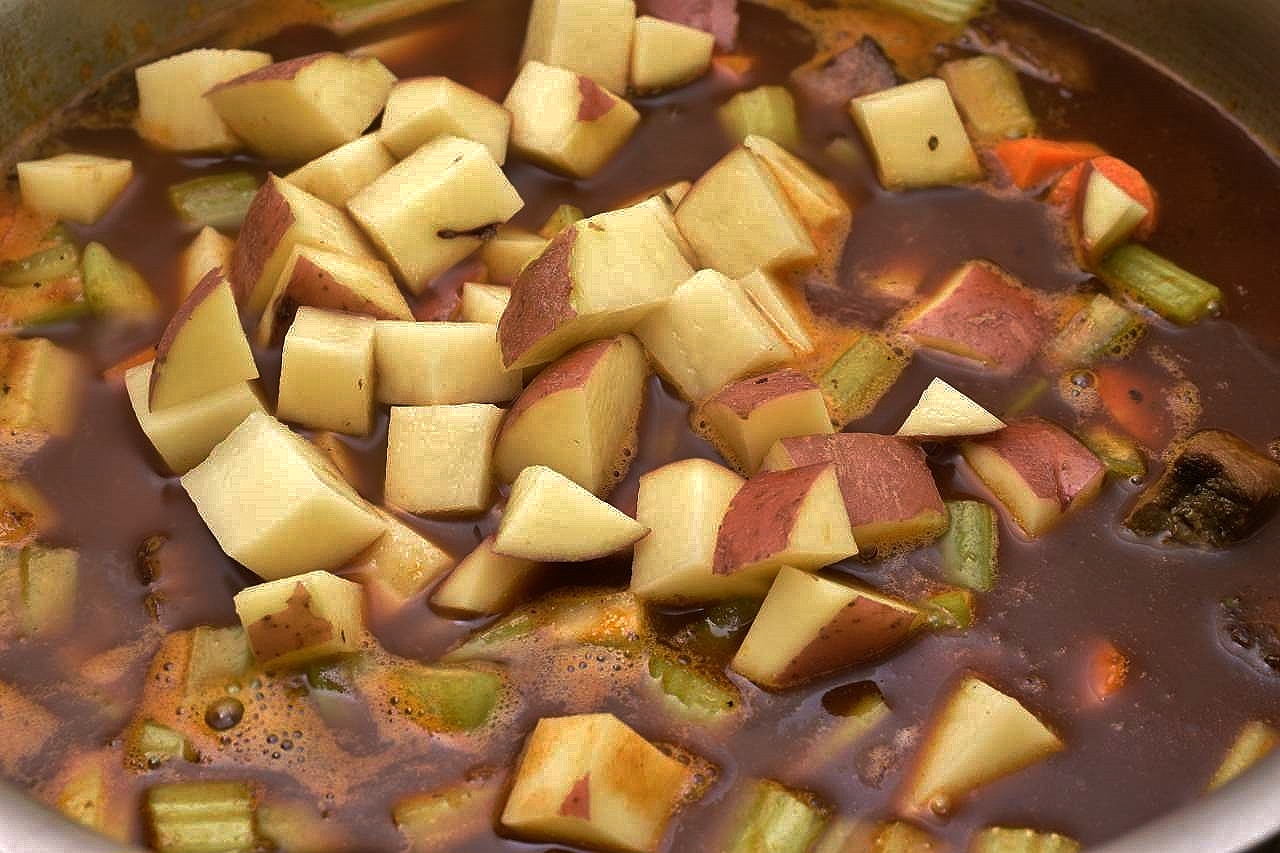
Add the potatoes, return to a boil and simmer for one hour. NOTE: This step can also be executed in a sous vide bath set to 183 F/84 C. Carefully transfer the hot ingredients to a large Ziploc bag. Dangle the opening over the edge of the container and secure with the lid.
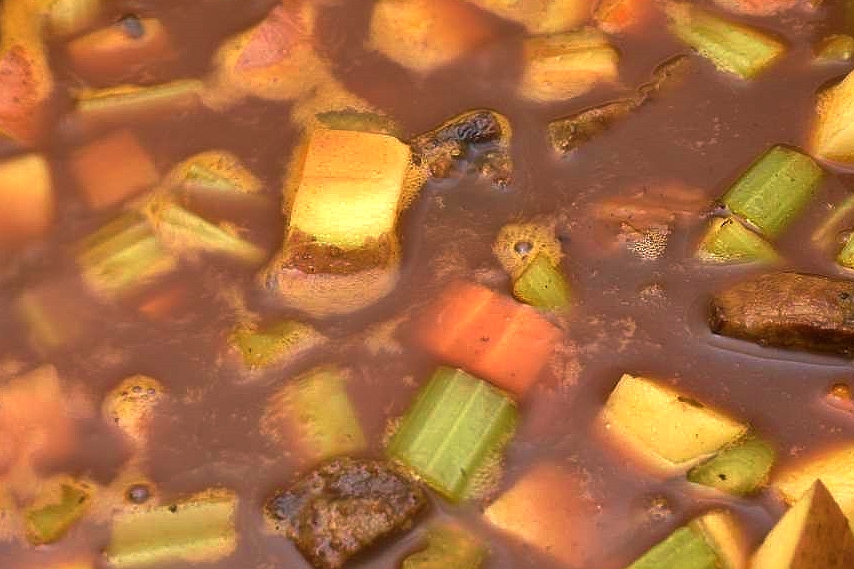
Add the end of the process, the stew still needs to be thickened. This step CANNOT be achieved in the sous vide bath. While the stew is in this final processing interval, heat 2 Tablespoons of oil in a large skillet to 250 F/121 C. Remove from heat and add 3 Tablespoons of flour. Stir to dissolve but do not brown–another myth dispelled. Allow to cool. Add the hot stew to the roux–not the other way around. It will thicken immediately as you slowly stir. Simmer for one minute. Add the peas to heat, but do not boil again unless you like gray peas. Check your seasonings.
Service
What could be simpler?
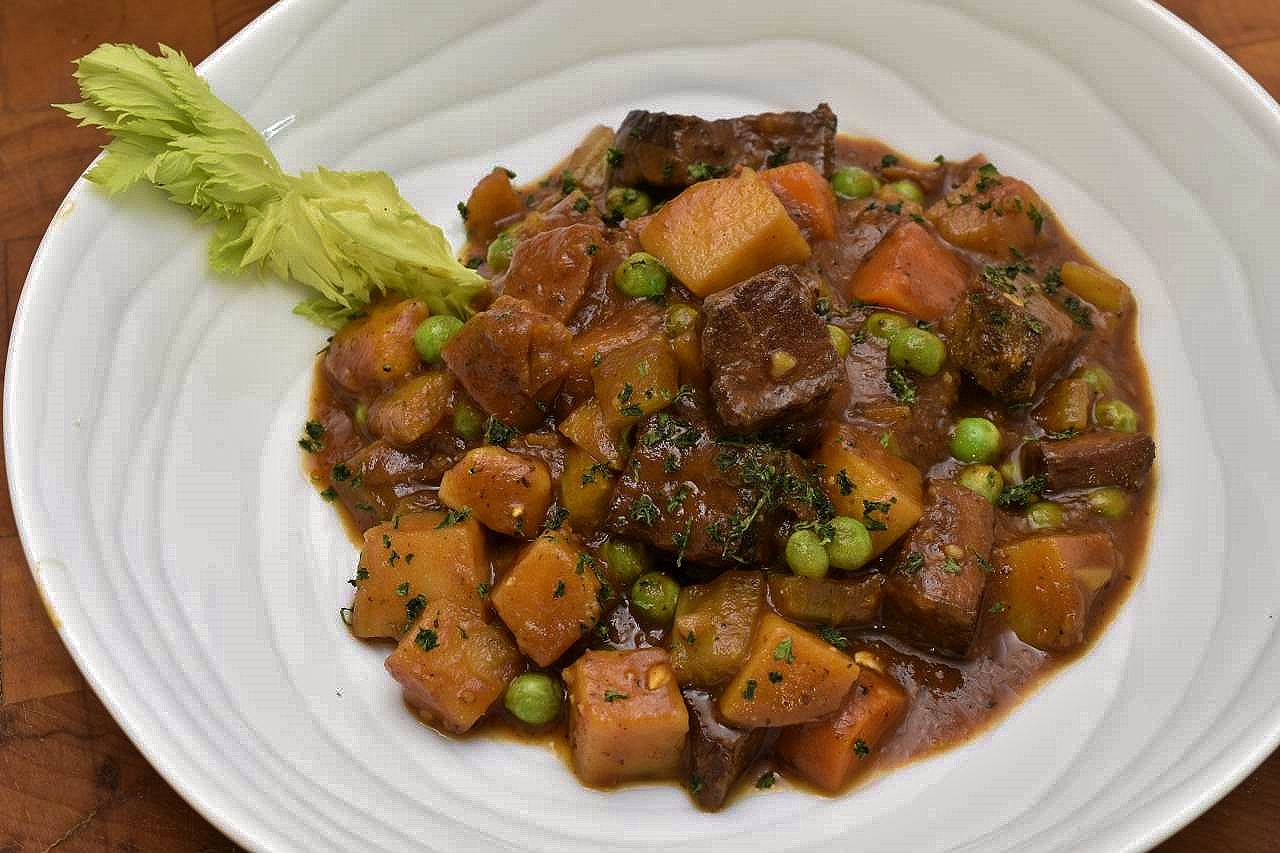
Norm King
be sure to visit us on Facebook at SVR–Sous Vide Resources; Low Temperature Pasteurization, Sous-B-Q™, | Facebook

